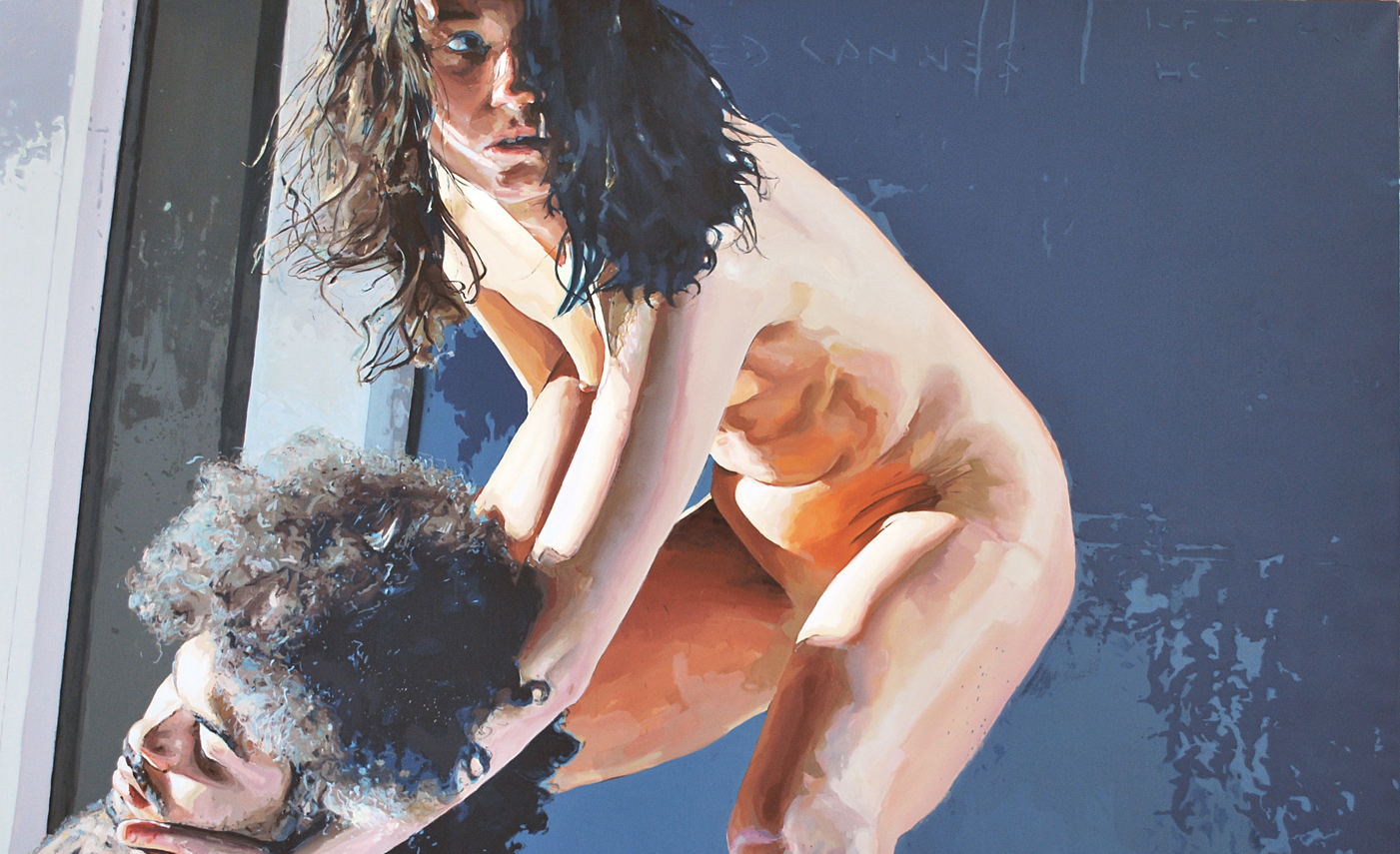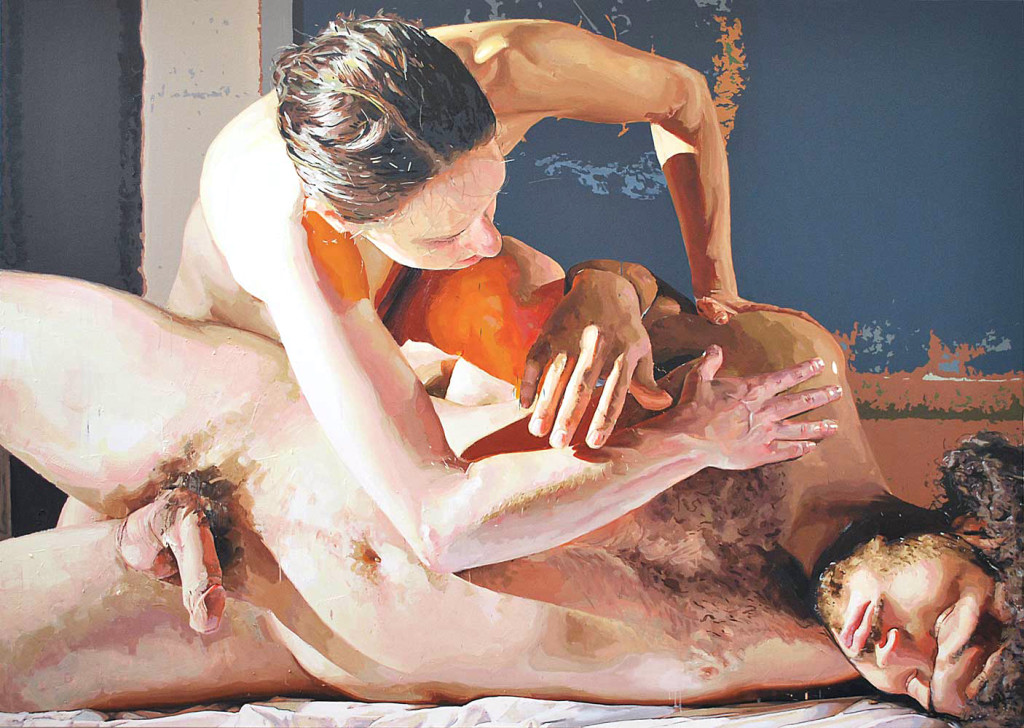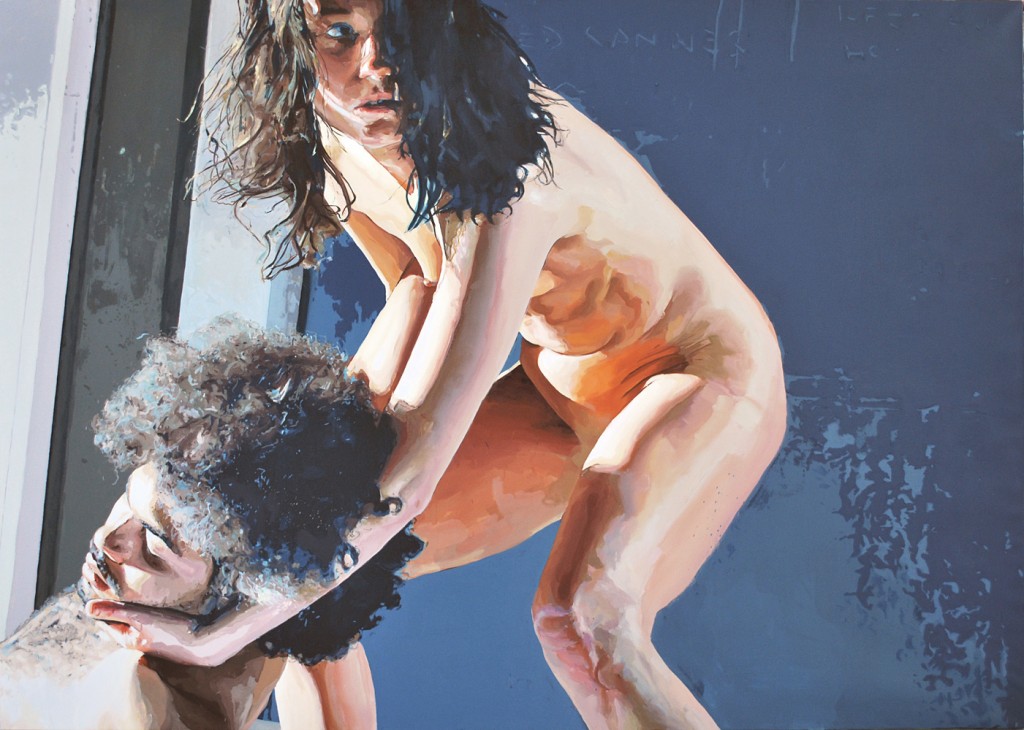BY BRONTE MANSFIELD
MODA Magazine and I recently sat down for an interview. Read below or view original post.
THE GALLERINA: SIGNIFICANT OTHER-INTERVIEW WITH ARTIST PATRICK EARL HAMMIE
Currently on view at the Porter Butts Gallery in the Memorial Union is an exhibition titled “Significant Other” by Patrick Earl Hammie. Hammie’s large oil paintings of a couple have an impressive presence in the gallery. The couple, whose nude bodies interact in striking, thought-provoking compositions, are initially a shock to the system of any twenty-something raised in our still-Puritanical culture; we are, even now, not accustomed to viewing the naked human body, and when we do, we view it with a hyper-critical eye. This is why Hammie’s art was so intriguing to me as I wandered the gallery: it made me confront my discomfort with bodies and the way they are visually represented in our culture. I had the privilege of meeting Hammie at the artist’s reception for the show; a unique pleasure for an art history student who is more used to putting words in the mouth of dead artists than talking to living ones.
Read Hammie’s insights into his art, gender roles, society and bodies below.
BRONTE MANSFIELD: What is your “mission” in the Significant Other series?
PATRICK EARL HAMMIE: I see my project Significant Other as a working platform to inspire discussion, rather than a mission in the traditional sense. Perhaps more than any other form of image making, paintings of the human figure have often been interpreted as a reflection of the values of the period in which it is produced. My work investigates the expectations built into this canonical genre, probing and dismantling the idealizing impulses that have historically shaped it. I focus specifically on constructions of gender and race, putting pressure on these categories as a means of expanding understanding of identity. This series presents a female and a male figure locked in a physical dialogue, hefting weight, and relocating the perceptions of ruined and objectified bodies that recall and carry on complex legacies of suffering and struggle. It reorients inherited expectations and makes room for these bodies to develop contemporary conceptions. Paintings in the series such as Aureole feature a commanding woman rotating a reclined man’s body to his side, baring his nakedness and inspecting his state of consciousness. Constructing moments where traditionally masculine strengths (dominance) and traditionally feminine strengths (care and empathy) are conflated in the woman’s actions while the man’s body and signifier of power—the penis—is vulnerable to public critique, the paintings witness the woman as an active authority and the man relieved from macho performance.
BM: What is the significance (forgive the pun) of the title “Significant Other”? I think it is an interesting word choice, especially in our current cultural climate where relationships are no longer binary male/female, boyfriend/girlfriend, husband/wife, but much more diverse and complex. Did this factor in to the title choice?
PEH: There is a double entendre to the title. I hope the work functions on a personal level for viewers, and they draw connections to their own relationships, but historical representations of Otherness and recent shifts that locate women and people of color as central influencers of culture and politics mainly inform this project. I’m interested in how male artists have imagined and visually formulated the nude figure in the history of Western art, and have spent the past several years using the pictorial traditions of the Old Masters, body language, and narrative to reconfigure inherited conceptions of ideal beauty and heroic nudity. I draw on the emotive qualities of Romanticist painting and its use of epic proportions to engage with political and humanistic expression, to imagine bodies as occasions for us to encounter difference toward considering their capacity for establishing new narratives.
BM: I was particularly stricken by your rendering of the female model: she looks natural, like she is inhabiting her body and her space without a hyper-consciousness of our society’s impossible standards of beauty. She bends, she crouches, her belly rolls. I think this is an especially important facet of this series to discuss, considering our readers (of a fashion magazine) and many viewers of the exhibition (college-aged girls) have been indoctrinated into a cult of stick-thin runway models or airbrushed, perfectly posed print models. Were you consciously thinking about representations of women and contemporary standards or beauty when you were working on this series?
PEH: The short answer is yes. Like fine art, fashion has a complicated history with framing women’s bodies in dignified or compromised ways, or marginalizing them. I’m interested in working toward a reality where we will consistently experience diverse reflections of ourselves in the bodies we encounter in fine art and other media, and in the artists who represent them. It’s important to engage in conversations like this, keeping a light on the roots of representation and placing fresh examples in spaces where they’ve been historically underrepresented.
BM: Is there anything else you would like to tell our readers?
PEH: The visual and material constructions of identity and culture are ongoing performances that warrant debate and scholarship from established and divergent sources. I appreciate you and your audience allowing me the space to share my efforts through a publication that speaks to many young people who are continuing to develop their social and visual values, preparing themselves to affect society. Thanks.
“Significant Other” is on view in the Porter Butts Gallery until March 25. More information here.



